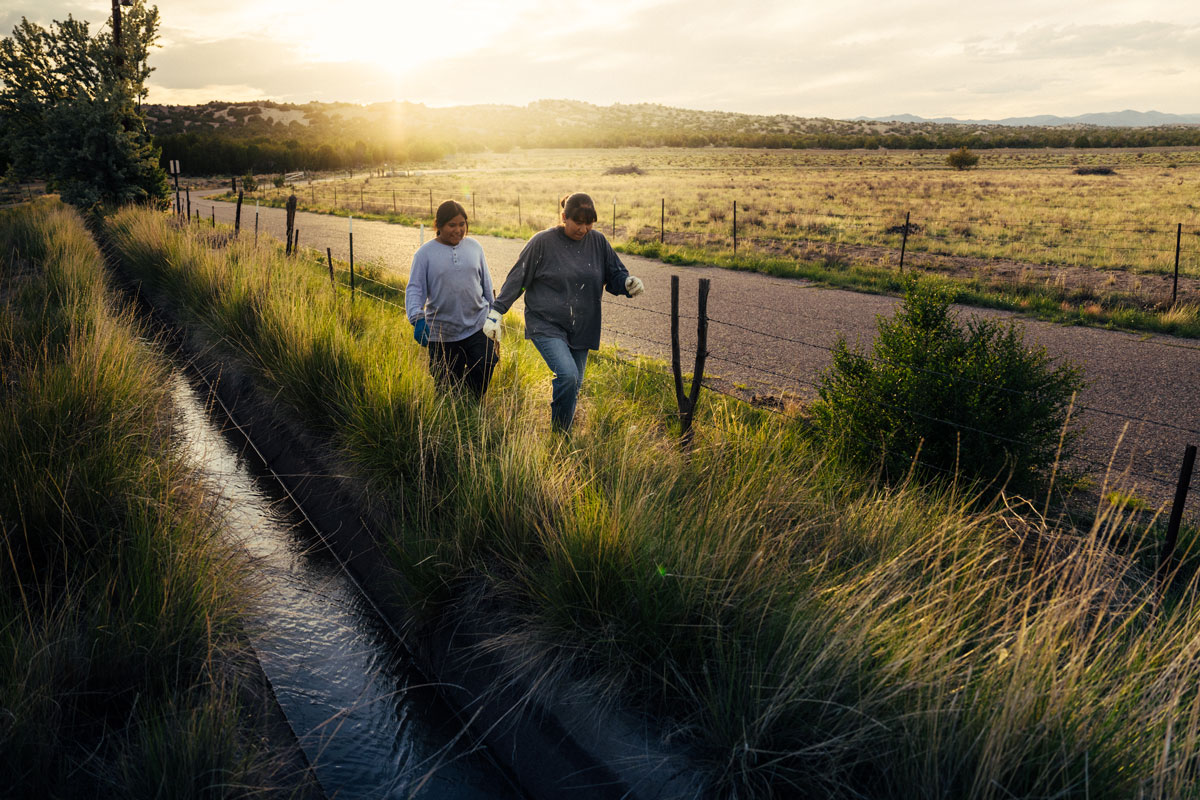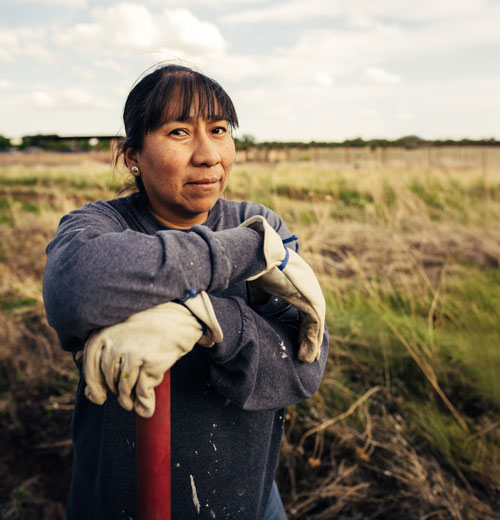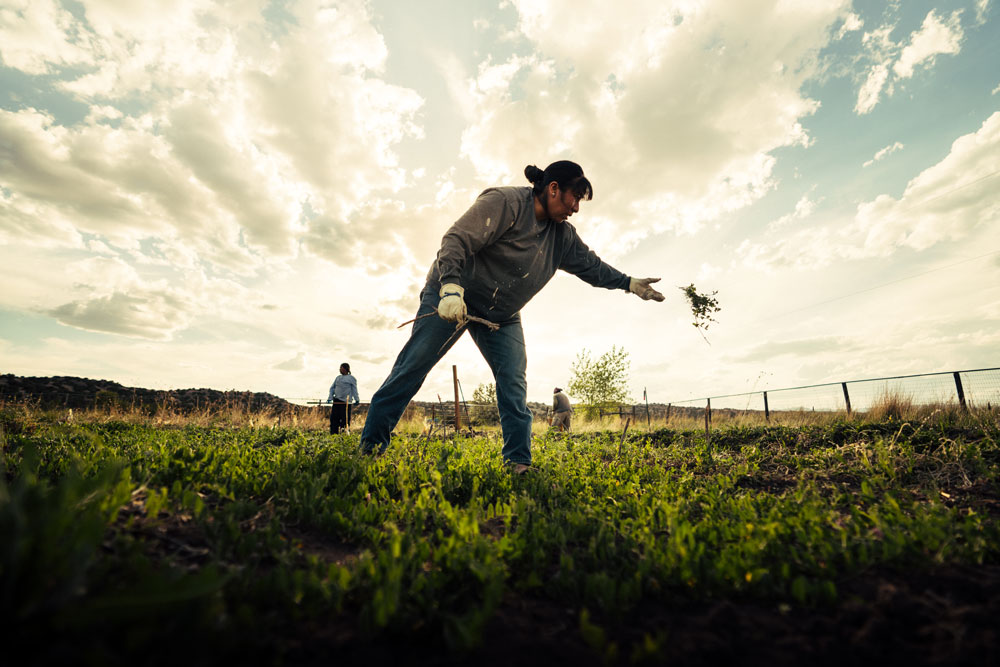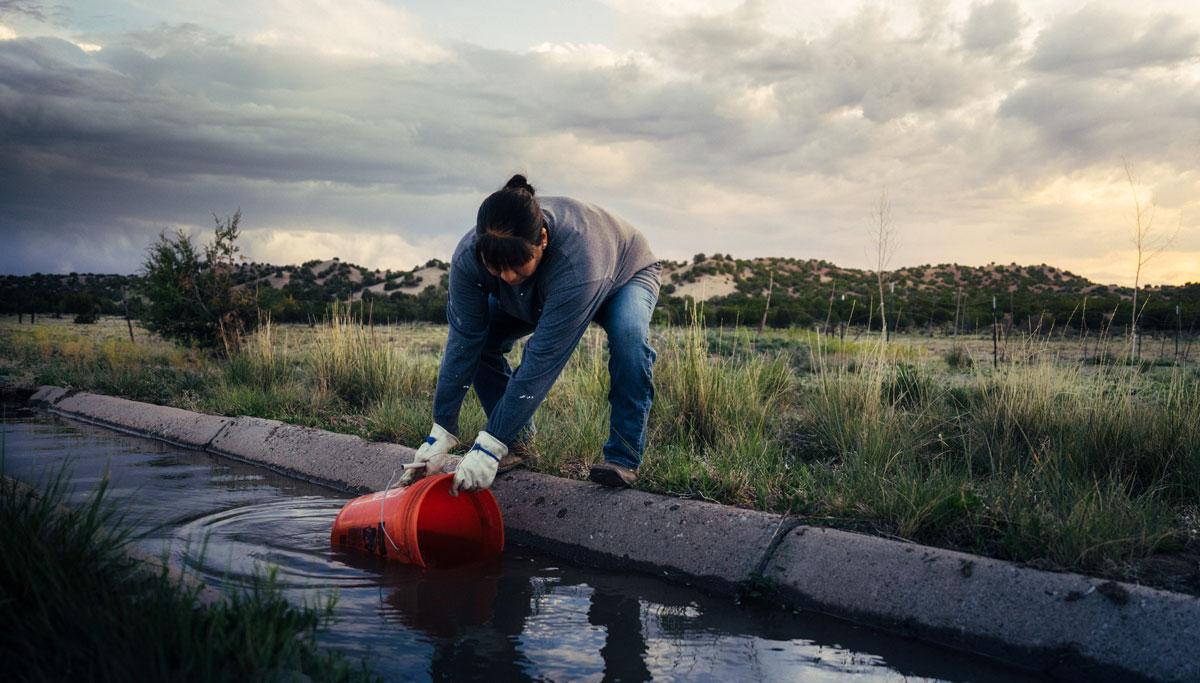‘WALKING WATER DROPS’: An Interview with Phoebe Suina
The Role of Science, Culture, and Community in Stemming New Mexico’s Water Crisis
Jun / 2024

Like any passionate scientist, water engineer Phoebe Suina can’t help but take her work home with her. In gathering storm clouds, she sees differential equations. On floodplain trail runs, she geeks out estimating roughness coefficients.
“I think in water,” Suina says. “I see water everywhere. I look at people, and I’m like, oh, there’s a bunch of big water drops walking around.” (Our bodies are 60 percent water, after all.)
But here in arid New Mexico, where climate change and dwindling water resources are throwing our hydrological cycles out of balance, even Suina says it’ll take more than mathematical models and smart policy to correct our course. Avoiding a water shortage will require all of us and a lot of creative solutions.


GET EVERYONE TO THE TABLE
Suina is a Dartmouth College-trained engineer, a New Mexico Interstate Stream Commissioner and the owner of environmental consulting firm High Water Mark, LLC. She’s also a member of Cochiti and San Felipe Pueblos. So for her, finding balance in nature is a cultural imperative handed down from her elders.
The history of water planning in New Mexico is in some ways a history of exclusion, Suina says. Inviting everyone to the table – especially representatives from communities whose New Mexico roots extend back several millennia – will make for a much richer conversation.
In her consulting business, Suina calls on both her scientific training and the wisdom of her people to solve problems. She and her colleagues may spend hours building complex models, but Suina also finds herself looking skyward to analyze cloud patterns and rain density, communing with elders, and feeling the soil to gauge moisture levels. Her models are more robust, she says, thanks to cultural knowledge and hard-earned intuition.
“The model in my head can’t be peer-reviewed,” she says. “But it still has essential data and assumptions and understanding and data points, and these data points have been gathered for thousands of years.”
‘MEANT TO BE DIFFICULT’
Suina’s ancestors, the Ancestral Puebloan people, have lived in the Four Corners region for thousands of years – through droughts and floods, through times of scarcity and abundance. Persisting within nature’s swinging pendulum taught Suina’s ancestors lessons in gratitude and humility.
Living in the high desert “was meant to be difficult,” Suina says. “But that’s OK because it teaches us not to take things for granted, and to always remember to be in that balance.”
Today, thanks to climate change and decades of overuse, New Mexico’s hydrological system is out of balance. Scientists predict a water shortage of 750,000 acre-feet within the next 50 years. That’s enough water to fill something like 6 billion bathtubs.
Suina and her colleagues are “waving red and yellow flags,” she said. Still, sometimes she feels unseen.
“What do I need to do?” she asked. “Do I need to jump on the table, light my hair on fire? That’s what’s happening with climate change now. Mother Nature is on the table, lighting her hair on fire.”

THE POWER OF ‘WALKING WATER DROPS’
Science can empower policy makers by providing justification for sweeping changes. But for Suina, it’s the power of community that ultimately will heal the earth.
As “walking water drops,” people are part of our water system, Suina says. And just as a downpour floods a river, a collective change in behavior can transform and shape the future.
Even small changes – like turning off the tap when you’re brushing your teeth, taking shorter showers, or watering plants in the early-morning hours instead of at midday – can help restore balance, so long as we undertake them together.
“If you don’t have multiple drops of water participating, it will never happen,” Suina says. “It’s accepting responsibility and acknowledging that we each have our drop of water to contribute to that shift.”
Ready to contribute your droplet? Join Phoebe Suina and your fellow New Mexicans as we plan for the future of water use in our state.
